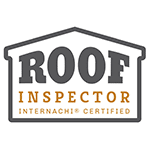Home inspection add on
Wind Mitigation Inspection






We Provide Comprehensive Foundation Certifications in Florida
Wind mitigation is a crucial assessment when it comes to protecting a home. The inspection focuses on how well your home will withstand the forces of a hurricane or storm. As a homeowner, you can earn credits towards discounts on your homeowner’s insurance. More qualifying factors mean bigger discounts. Give our team a call today at 850-586-1934 for more information on our storm and wind mitigation inspections.
Contact our team today for a wind mitigation inspection.
Pricing
Standard pricing:
- Standalone Wind Mitigation Inspection $125
- Combined with a General Home Inspection $50

FAQ
Qualified Inspectors
Our inspectors are InterNACHI® certified and have years of experience doing wind mitigation inspections. Both Richard and James hold dozens of certifications and accreditations. POMI Services is an InterNACHI® Certified Wind Mitigation Inspector.



Factors in a Wind Mitigation Inspection
There are seven categories an inspector looks at when determining credit for an insurance discount:

